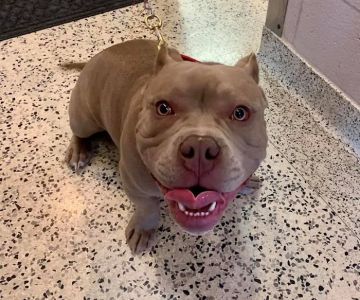How Long Does it Take to Become a Veterinary Cardiologist?
Becoming a veterinary cardiologist is a rewarding journey that requires years of dedication and specialized education. As a veterinarian who focuses on the heart health of animals, a veterinary cardiologist plays a critical role in diagnosing and treating heart conditions in pets. If you’re interested in pursuing this career, you may be wondering how long it actually takes to become a veterinary cardiologist. Let’s break down the process step by step so you can understand the time commitment and the challenges that come with this specialized field of veterinary medicine.
1. Completing a Bachelor's Degree
The first step in becoming a veterinary cardiologist is obtaining a bachelor's degree. Most aspiring veterinarians choose to major in a related field such as biology, animal science, or pre-veterinary medicine. While there is no specific degree required, courses in biology, chemistry, physics, and mathematics will provide the foundation you need to enter veterinary school.
During your undergraduate years, you should focus on building a strong academic record, as veterinary schools are highly competitive. Additionally, gaining experience by volunteering or working in animal care settings—such as animal shelters or veterinary clinics—will strengthen your application and provide valuable hands-on experience. Typically, a bachelor's degree will take around four years to complete.
2. Attending Veterinary School
After completing your undergraduate degree, the next step is to attend a veterinary school. Veterinary schools in the U.S. typically require an additional four years of study. During this time, you will study general veterinary medicine, covering everything from anatomy to pharmacology, and gain practical experience through clinical rotations and internships.
Becoming a veterinary cardiologist requires a thorough understanding of general veterinary practices, as well as the ability to diagnose and treat a wide range of conditions. It’s important to note that veterinary schools are highly competitive, and only the most qualified candidates will be accepted. The four years of veterinary school are rigorous, and you will need to be dedicated and focused on mastering the essential skills.
3. Completing a Veterinary Internship
Once you have completed veterinary school and earned your Doctor of Veterinary Medicine (DVM) degree, the next step in becoming a veterinary cardiologist is completing an internship. This is a post-graduate position where you gain more hands-on experience in veterinary medicine, particularly in areas that interest you, such as cardiology.
Internships are typically one year long and provide the opportunity to work closely with experienced veterinarians who specialize in cardiology. This period allows you to sharpen your diagnostic skills, learn how to interpret diagnostic tests, and gain experience in administering treatments. A veterinary cardiology internship is an essential component of becoming a specialist in this field.
4. Completing a Veterinary Cardiology Residency
After finishing your internship, the next step is to pursue a residency in veterinary cardiology. A residency is an advanced training program that focuses specifically on heart diseases in animals. During this period, you will work under the supervision of veterinary cardiologists and gain specialized knowledge and skills in diagnosing and treating heart conditions in pets.
Residencies in veterinary cardiology typically last between three to four years. During this time, you will receive in-depth training on cardiovascular diseases, diagnostic techniques such as echocardiography, and surgical procedures. You will also be expected to conduct research and contribute to the veterinary cardiology field, further expanding your knowledge and expertise.
5. Becoming Board-Certified
Once you have completed your residency, the final step to becoming a veterinary cardiologist is obtaining board certification. This involves passing rigorous exams administered by the American College of Veterinary Internal Medicine (ACVIM) in the specialty of cardiology. Becoming board-certified demonstrates that you have met the highest standards in veterinary cardiology and are qualified to diagnose and treat complex cardiac issues in animals.
It’s important to note that becoming board-certified is not just about passing exams. You will also need to submit a detailed case log and demonstrate a certain level of expertise in handling clinical cases related to veterinary cardiology. After completing these requirements and passing the exam, you will officially be recognized as a veterinary cardiologist.
Conclusion: Time Commitment and Dedication
Becoming a veterinary cardiologist is a significant time investment that requires years of education, training, and dedication. From earning a bachelor's degree to completing a veterinary internship, residency, and finally becoming board-certified, the journey to becoming a veterinary cardiologist typically takes around 11 to 13 years. However, the reward of being able to help animals and their families by diagnosing and treating heart conditions makes it all worthwhile.
If you are passionate about animal care and have a particular interest in cardiology, pursuing this career path could be incredibly fulfilling. Want to learn more about veterinary cardiology or find resources for further education? Visit HeartCare Hub for the latest information and professional recommendations to help you along the way.











